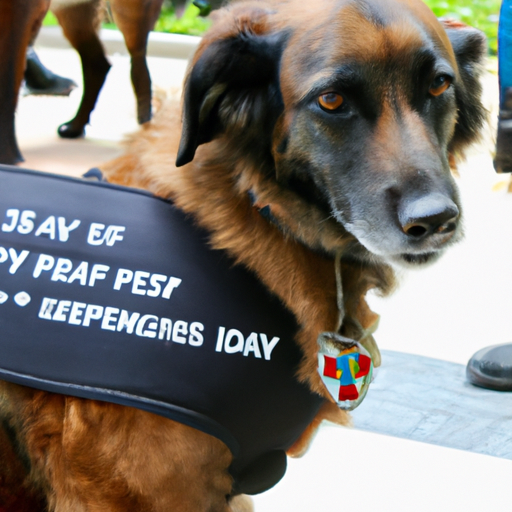An Introduction to Service Dogs
You might think that only certain breeds can be service dogs, but the truth is far more inclusive. Service dogs come in all shapes, sizes, and breeds. It’s not about the breed but the individual dog’s personality, temperament, and trainability. They become an essential part of the caregiver’s team, aiding and assisting in everyday tasks.
Common Breeds of Service Dogs
While any breed can be a service dog, some breeds are more commonly used due to their temperament, intelligence, and size. Here are some of the most common breeds used as service dogs:
- Labrador Retrievers – Known for their intelligence and eagerness to please, Labradors are a popular choice for service dogs.
- Golden Retrievers – Similar to Labradors, Golden Retrievers are friendly, intelligent, and great with people.
- German Shepherds – These dogs are highly intelligent and versatile, making them suitable for many types of assistance work.
- Border Collies – An extremely intelligent breed, Border Collies can be trained to perform a variety of tasks.
- Poodles – Poodles, both standard and miniature, are intelligent, hypoallergenic dogs, making them excellent service dogs.
Skills and Training of Service Dogs
Service dogs are trained to perform specific tasks for individuals with disabilities. A dog’s suitability to be a service dog is not dependent on breed, but on their individual characteristics and aptitude for training. Key skills that service dogs are often trained on include:
- Guidance – Leading people who are blind or visually impaired
- Alerting – Informing individuals with hearing impairment of sounds like doorbells or alarms
- Retrieving – Picking up dropped items or fetching things from other rooms
- Support – Providing physical support for individuals with mobility issues
The Role of Service Dogs in Caregiving
For caregivers, a service dog can be a powerful tool and companion in providing care. They not only assist with physical tasks but also offer emotional support. Their presence can be comforting and reassuring, helping to reduce stress and anxiety. A service dog’s role in the life of a person requiring care can be broken down into three main areas:
| Role | Description |
|---|---|
| Physical Support | Assisting with mobility-related tasks |
| Emotional Support | Providing companionship and reducing anxiety |
| Alerting | Notifying caregivers of changes in the individual’s condition |
Selecting a Service Dog
When selecting a service dog, it is important to consider the individual’s needs and lifestyle, as well as the dog’s temperament, size, and energy level. A professional trainer or organization can assist in finding the perfect match.
FAQ
Q: Can small dogs be service dogs?
A: Yes, small dogs can be service dogs, depending on the tasks they are trained for.
Q: Is it possible to train my own dog to be a service dog?
A: Yes, with the right resources and commitment, it is possible to train your own service dog.
Q: How long does it take to train a service dog?
A: It can take between 6 months to 2 years to fully train a service dog.
Q: Can service dogs be any breed?
A: Yes, any breed can be a service dog, as long as the individual dog has the right temperament and trainability.



